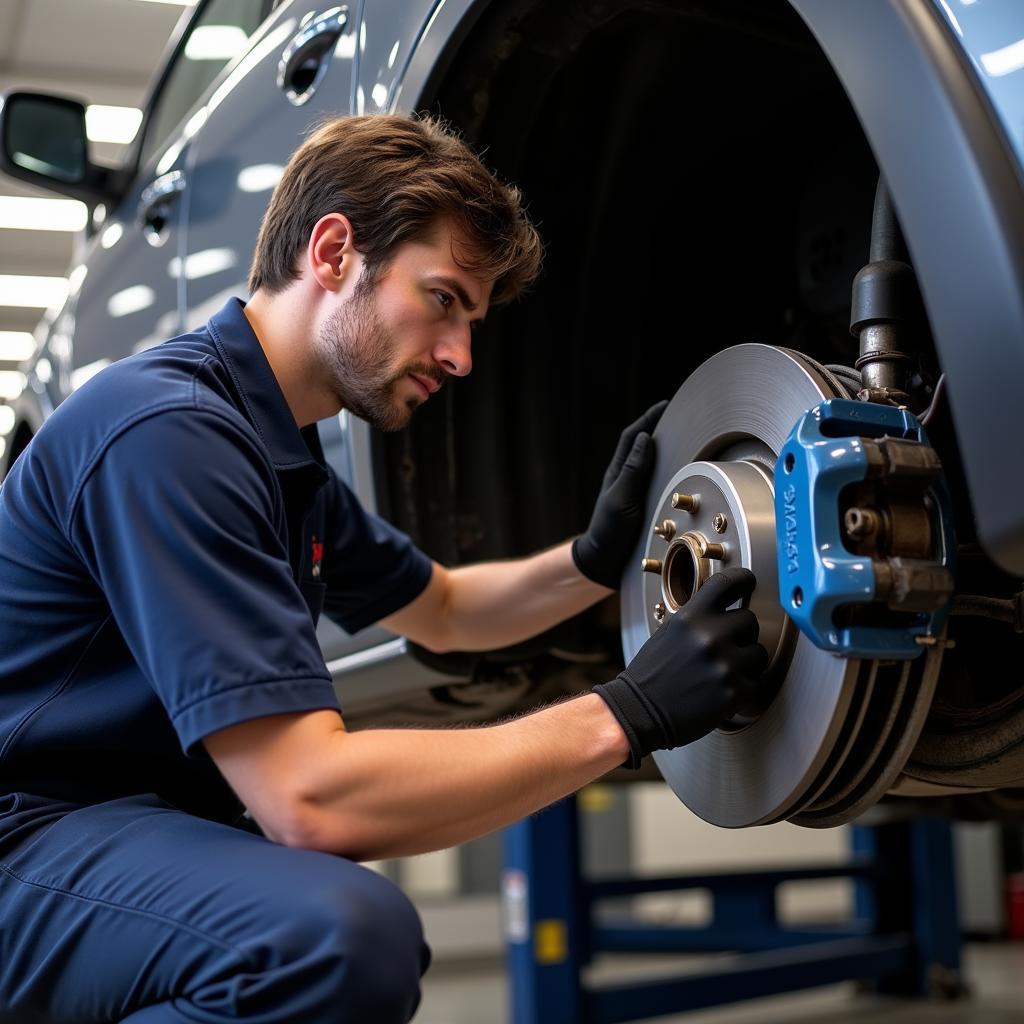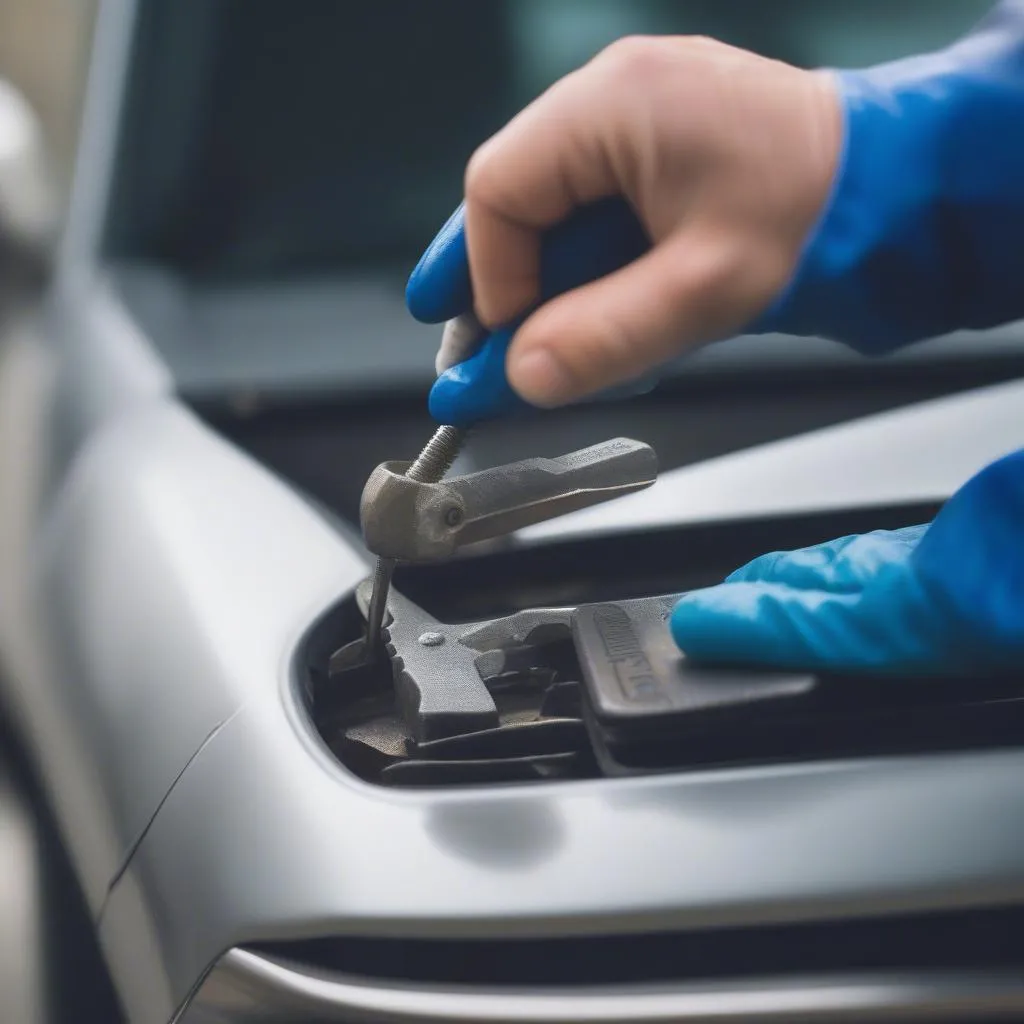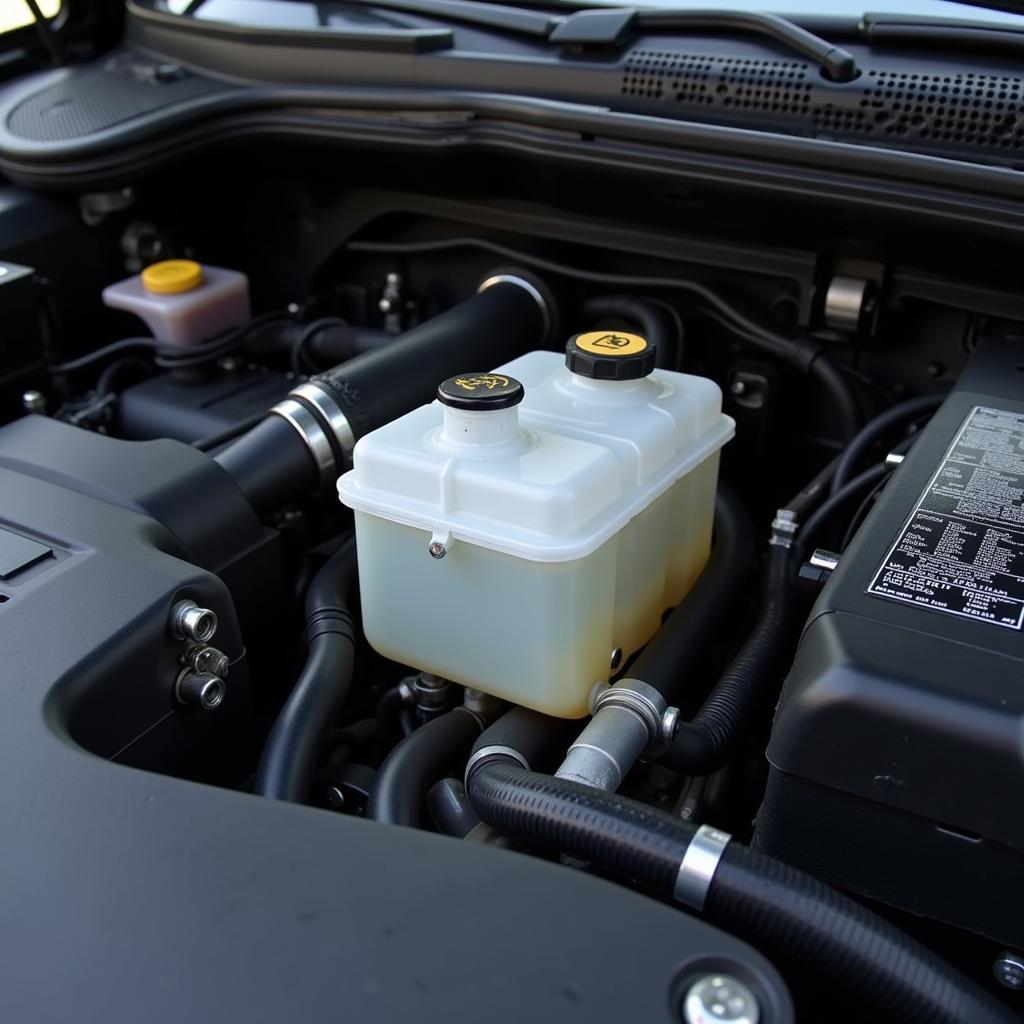The “vehicle brakes often warning sticker” is more than just a suggestion—it’s a crucial reminder about your car’s safety system. This article delves into the reasons behind this sticker, possible causes of frequent brake warnings, and the steps you can take to ensure your vehicle remains safe and roadworthy.
Understanding Your Vehicle’s Brake Warning System
Modern vehicles are equipped with sophisticated sensor networks that continuously monitor critical components, including the braking system. When these sensors detect an anomaly, they trigger a warning light on your dashboard, often accompanied by an audible alert. While these warnings can be triggered by various factors, consistently seeing the “vehicle brakes often” sticker indicates a recurring issue demanding immediate attention.
Common Causes of Frequent Brake Warnings
While a qualified technician using diagnostic tools can pinpoint the exact cause, understanding common reasons for frequent brake warnings can prepare you for potential repairs:
- Worn Brake Pads: Brake pads are designed to wear down over time. Thin brake pads trigger the warning system, indicating the need for replacement.
- Low Brake Fluid: Brake fluid is the lifeblood of your braking system. Leaks or low fluid levels can significantly compromise braking performance, triggering the warning.
- Faulty Brake Sensors: Like any sensor, brake sensors can malfunction. A faulty sensor may send incorrect signals, leading to false warnings.
- Issues with the ABS System: The Anti-lock Braking System (ABS) is a crucial safety feature. Problems within this system, such as a malfunctioning wheel speed sensor, can activate the brake warning light.
- Parking Brake Engaged: While seemingly obvious, accidentally leaving the parking brake even slightly engaged is a common culprit behind frequent warnings. Always ensure your parking brake is fully disengaged before driving.
Diagnostic Procedures: Identifying the Root Cause
Diagnosing the specific cause of frequent brake warnings requires specialized equipment and knowledge:
- Visual Inspection: A technician will visually inspect your brake system, checking for obvious signs of wear, leaks, or damage.
- Diagnostic Scanning: Using a professional-grade OBD-II scanner, a technician can read the error codes stored in your vehicle’s computer, pinpointing the source of the problem.
- Brake Fluid Analysis: Examining the color and consistency of your brake fluid can reveal potential issues like contamination or the presence of moisture.
- Component Testing: Depending on the initial findings, technicians may need to test individual components such as brake calipers, wheel speed sensors, or the ABS module.
 OBD-II Diagnostic Scan
OBD-II Diagnostic Scan
Addressing the Issue: Repair and Maintenance
Once the problem is identified, the appropriate repair strategy can be implemented. This could involve:
- Brake Pad Replacement: Replacing worn brake pads is a standard maintenance procedure and is crucial for maintaining optimal braking performance.
- Brake Fluid Flush: Regularly flushing your brake fluid ensures the system operates with clean, moisture-free fluid, extending the life of brake components.
- Sensor Replacement: Faulty brake sensors need to be replaced to ensure accurate data transmission and prevent false warnings.
- ABS System Repair: Depending on the specific issue, ABS repairs might range from sensor replacement to module repairs or replacement.
 Brake System Repair
Brake System Repair
The Importance of Timely Action
Ignoring frequent brake warnings can have serious consequences. Driving with compromised brakes significantly increases the risk of accidents, jeopardizing your safety and that of others on the road. Remember, early detection and timely repair are crucial to maintaining a safe and reliable vehicle.
FAQs: Addressing Common Concerns
Q: Can I continue driving with the brake warning light on?
A: While you might be able to drive a short distance, it’s crucial to have your braking system inspected immediately. Driving with compromised brakes is extremely dangerous.
Q: How often should I change my brake pads?
A: Brake pad lifespan varies depending on driving style and conditions. As a general rule, have them checked every 12,000 miles and replaced as needed.
Q: Is it safe to add brake fluid myself?
A: While adding brake fluid might seem straightforward, it’s best left to professionals. Incorrect fluid type or improper bleeding procedures can damage your braking system.
Conclusion
The “vehicle brakes often warning sticker” is a critical safety alert. By understanding its significance, recognizing potential causes, and taking prompt action, you contribute to a safer driving experience for yourself and fellow road users. Remember, timely maintenance and professional diagnostics are essential for ensuring your vehicle’s braking system functions flawlessly, keeping you safe on the road.


